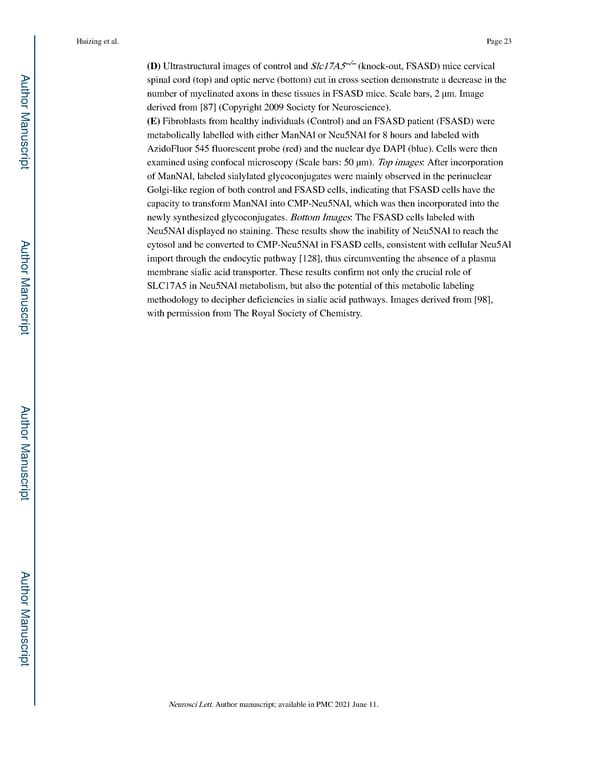Huizing et al. Page 23 −/− (D) Ultrastructural images of control and Slc17A5 (knock-out, FSASD) mice cervical A uthor Man spinal cord (top) and optic nerve (bottom) cut in cross section demonstrate a decrease in the number of myelinated axons in these tissues in FSASD mice. Scale bars, 2 μm. Image derived from [87] (Copyright 2009 Society for Neuroscience). (E) Fibroblasts from healthy individuals (Control) and an FSASD patient (FSASD) were uscr metabolically labelled with either ManNAl or Neu5NAl for 8 hours and labeled with AzidoFluor 545 fluorescent probe (red) and the nuclear dye DAPI (blue). Cells were then ipt examined using confocal microscopy (Scale bars: 50 μm). Top images: After incorporation of ManNAl, labeled sialylated glycoconjugates were mainly observed in the perinuclear Golgi-like region of both control and FSASD cells, indicating that FSASD cells have the capacity to transform ManNAl into CMP-Neu5NAl, which was then incorporated into the newly synthesized glycoconjugates. Bottom Images: The FSASD cells labeled with Neu5NAl displayed no staining. These results show the inability of Neu5NAl to reach the A uthor Man cytosol and be converted to CMP-Neu5NAl in FSASD cells, consistent with cellular Neu5Al import through the endocytic pathway [128], thus circumventing the absence of a plasma membrane sialic acid transporter. These results confirm not only the crucial role of SLC17A5 in Neu5NAl metabolism, but also the potential of this metabolic labeling uscr methodology to decipher deficiencies in sialic acid pathways. Images derived from [98], with permission from The Royal Society of Chemistry. ipt A uthor Man uscr ipt A uthor Man uscr ipt Neurosci Lett. Author manuscript; available in PMC 2021 June 11.
 Free Sialic Acid Storage Disorder: Progress and Promise Page 22 Page 24
Free Sialic Acid Storage Disorder: Progress and Promise Page 22 Page 24